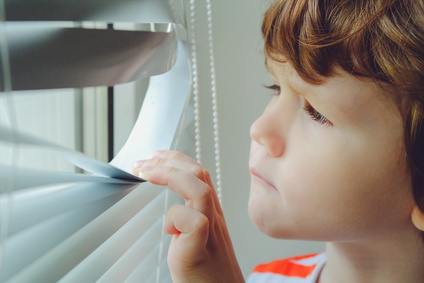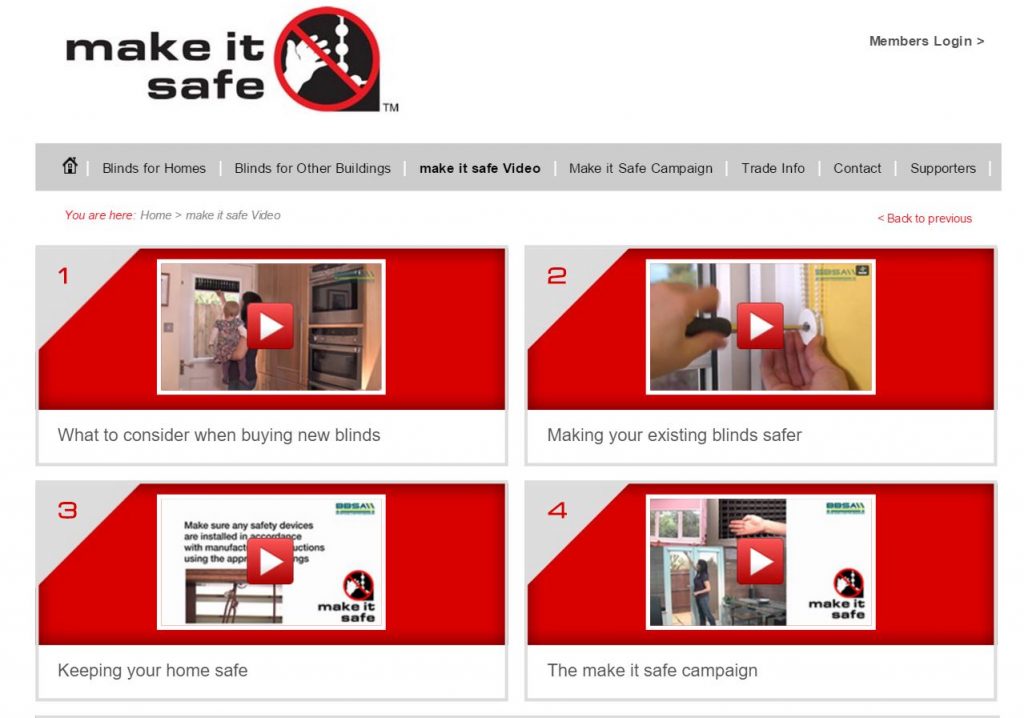Blind Safety: Are your Properties Safe and Compliant?
Published on January 2, 2016 by Sarah Mac

Blind related accidents have sadly been responsible for 28 child deaths in the UK since 1999, with 14 of those having happened since 2010. The deaths are avoidable, and EU standards introduced in February 2014 set out to control the manufacture, sale and installation of new blinds with a view to reducing child accidents.
The regulations issued by the EU in 2014 require all existing blinds to be made safe retrospectively using custom safety devices. They also require all cords and chains to be fitted with a safety device at the point of manufacture, meaning that all new blind cords will be safety compliant.
The regulations also ban the use of blind cords and chains that could create a hazardous loop from being installed in properties where children up to 42 months are likely to be able to access to them, or be present near them.
The British Blind and Shutter Association provides guidance on its Make it Safe website. It is important for landlords to be familiar with these standards and, even if your properties are not let to families, you should bear in mind that younger couples may go on to have a child during their tenancy, or that any tenants for that matter may invite younger family members into their homes, or play host to guests with children. Attention should therefore be paid to blind safety, no matter what the tenant circumstances.
In any case, with the exception of certain commercial properties, it does not matter whether children live in the home: the law stipulates that the Child Safety Regulations apply to all types of property.
How to Make Blinds Safe
If your properties are fitted with blinds that have cords or chains, then you will either need to replace them with new compliant models, or install breakaway connectors, cord and chain safety retainers or cleats. Without a device to secure the blind in place, the blind will not be deemed compliant.
Cords and chains must be maintained at a minimum height of 1.5 metres from floor level in addition to the above mentioned requirement for a security device. For low level blinds that stop less than or in the region of 1.5 metres from floor level, it is permissible to use an operating chain with a maximum loop of 20cms, as this is not considered a choking hazard.
Cleats or cord retainers: these are retainers that are used to wind blind cords or chains so that they do not hang down. They can be double ended, which are suitable for shorter blinds with thinner cords, or mushroom head cleats, which are better for longer blinds with thicker cords.
Breakaway connectors: these allow up to four cord to be terminated into a single housing, with a single cord left to operate the blind. If force is applied, such as a child becoming entangled, the connector will break apart.
Cord Tensioners: it is preferable for roller blinds and Roman blinds to be fitted with cord tensioners rather than breakaway connectors. These allow any loose chains to be safely tensioned and kept out of harm’s way.
Useful Blind Safety Resources
This video series from Make it Safe provides advice on what to consider when buying new blinds, how to make existing blinds safer, how to keep your property safe and general information on their campaign. Click on the thumbnail to link through to the video page.
The aim is for all blinds fitted in any property to be ‘safe by design’. This means a blind that is cordless or has been designed with tensioned cords, or is cordless.
It really is not a difficult task to make blinds safe, and in doing so to make your properties a legally compliant and safe place for families to live, and to visit.


